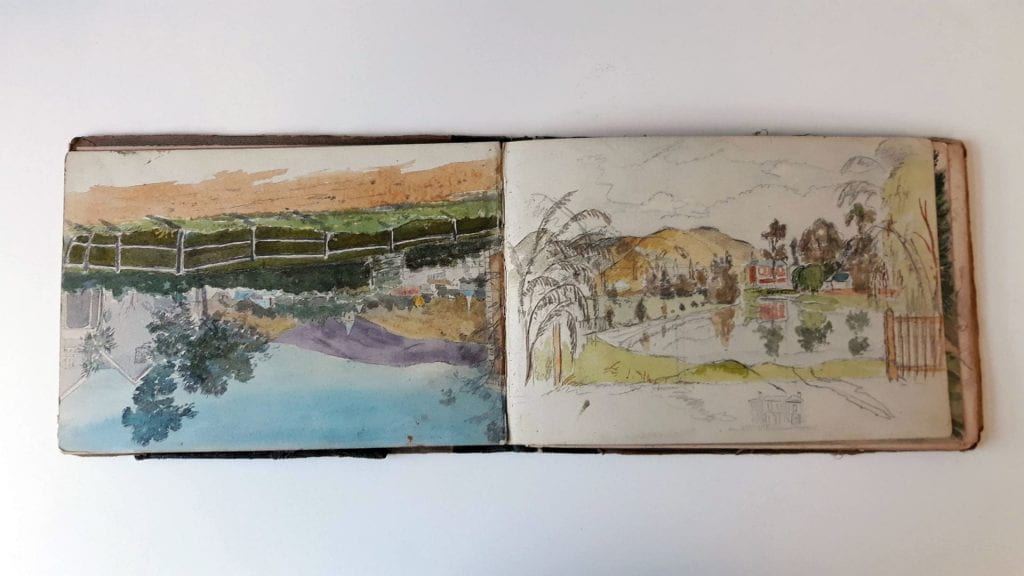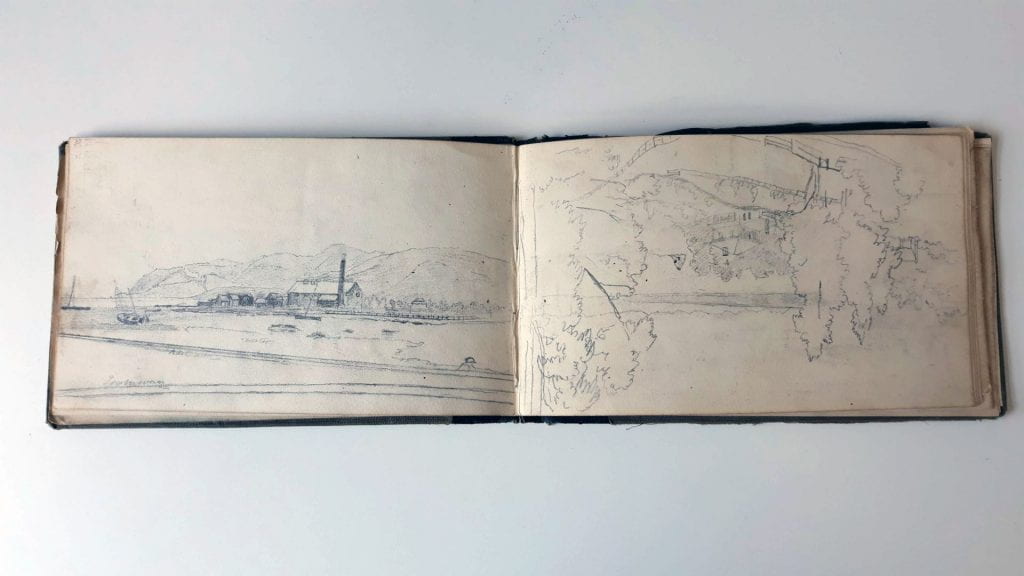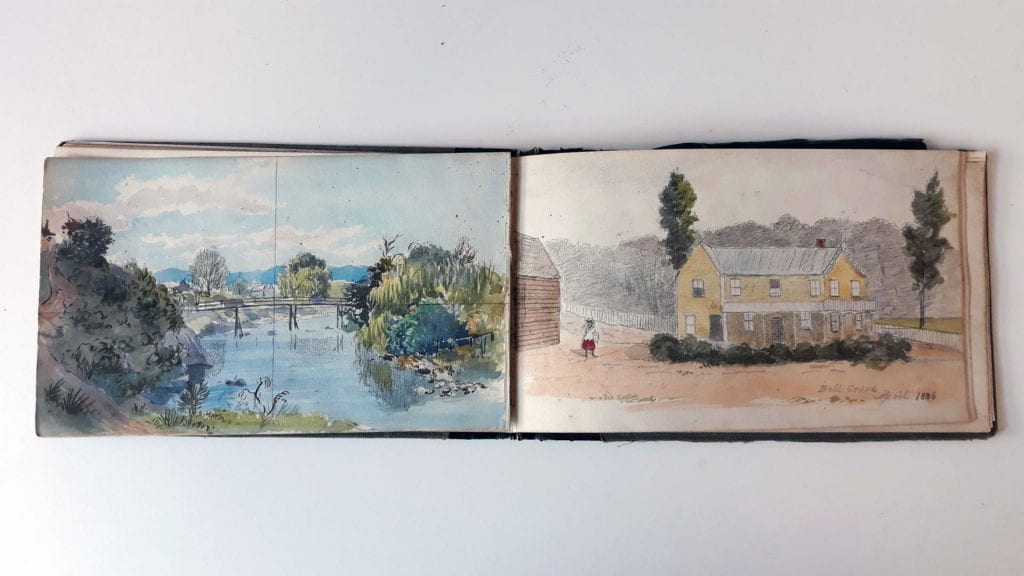By Michele Leggott
We begin posts for 2020 with online publication of sketches by Edwin Harris from the period of the family’s relocation to Nelson after the loss of their son Corbyn in the Taranaki War of 1860. Our captions are provisional and we welcome improvements from those who know the Nelson region better than we do.
Two sketchbooks belonging to Edwin Harris survive in family collections and present a record of the artist’s rendition of scenes and figures around Nelson in the 1870s and 1880s. Each book has been extensively used and contains pencil and watercolour sketches made as Edwin moved about his environs. He studied rivers and hills; farms and orchards; trees and foliage; harbour, lighthouse and seashore; clouds and light effects; an eclipse, a rainbow and a comet; churches, gravestones, streets and bridges: schools and houses; sailing boats, dinghies and a paddle-steamer; carts and carriages. His eye for detail is keen and many drawings have notes on colour or a perspective grid of pencil lines. Sometimes more than one drawing appears on a single page and sometimes a panorama is spread across a double opening. Edwin worked in his sketchbooks whichever way he opened them, landscape and portrait orientations often upside down in relation to the surrounding pages. Where practical, we have turned and photographed the sketchbooks to give a viewing experience with a more consistent orientation. When drawings of different orientation appear side by side on the same page we can see the consequences of Edwin turning his sketchbook around: a house floats in the sky and trees grow sideways in mid-air.


The drawings are densely populated with figures going about their daily lives. Women walk, read or sketch; men row boats, fish or swim; children appear with mothers, aunts or sisters and everyone frequents the waterfront. There are cows, horses, ducks and swans; a bird flies past a windmill and once a chicken hops about the page near fishing nets drying on a fence. Edwin’s subjects are domestic and full of life as it was lived in colonial Nelson after the Harris family’s relocation there in 1861. Sometimes an annotation or a date on a sketch connects with local events, as when the drawing of a sailor at the wheel of the SS Taranaki surrounded by passengers can be linked to a holiday excursion to Croisilles Harbour at Christmas 1870. And a sketch dated 10 October 1882 is the artist’s personal record of the great daylight comet observed in New Zealand skies in that year.

Edwin’s drawings also supply context for his daughter Emily’s diary observations from the 1880s. Thus it is that we have Edwin’s sketch of a solar eclipse in September 1885 and Emily’s description of the family’s early morning expedition to observe it. Edwin sketches the grounds of the Belgrove estate and Emily’s diary reveals that her sister Frances and Edwin went by excursion train to Belgrove on Easter Monday 1886 while she stayed at home to put up a shelf in the dining room.
Some of Edwin’s sketches are preliminary studies for works now in the Nelson Provincial Museum. A pencil drawing entitled ‘Nile Street, Trafalgar Square, Nelson’ on pages 49 and 50 of the Cranstone sketchbook is the origin of the watercolour ‘Nile Street East, Trafalgar Square Nelson, New Zealand 1876.’
By comparing the sketchbooks with existing paintings we hope to bring Edwin Harris’s Nelson career into focus as part of our interest in the Harris family art-making.
We are grateful to Roseanne Cranstone and Godfrey JW and Judith Briant for making Edwin Harris’s sketchbooks available for research and online publication.
Lead writer: Michele Leggott
Research support: Brianna Vincent, Makyla Curtis
What treasures. Thanks for sharing Sue Needham
Such delightful sketches. He takes great care to differentiate native from introduced flora.